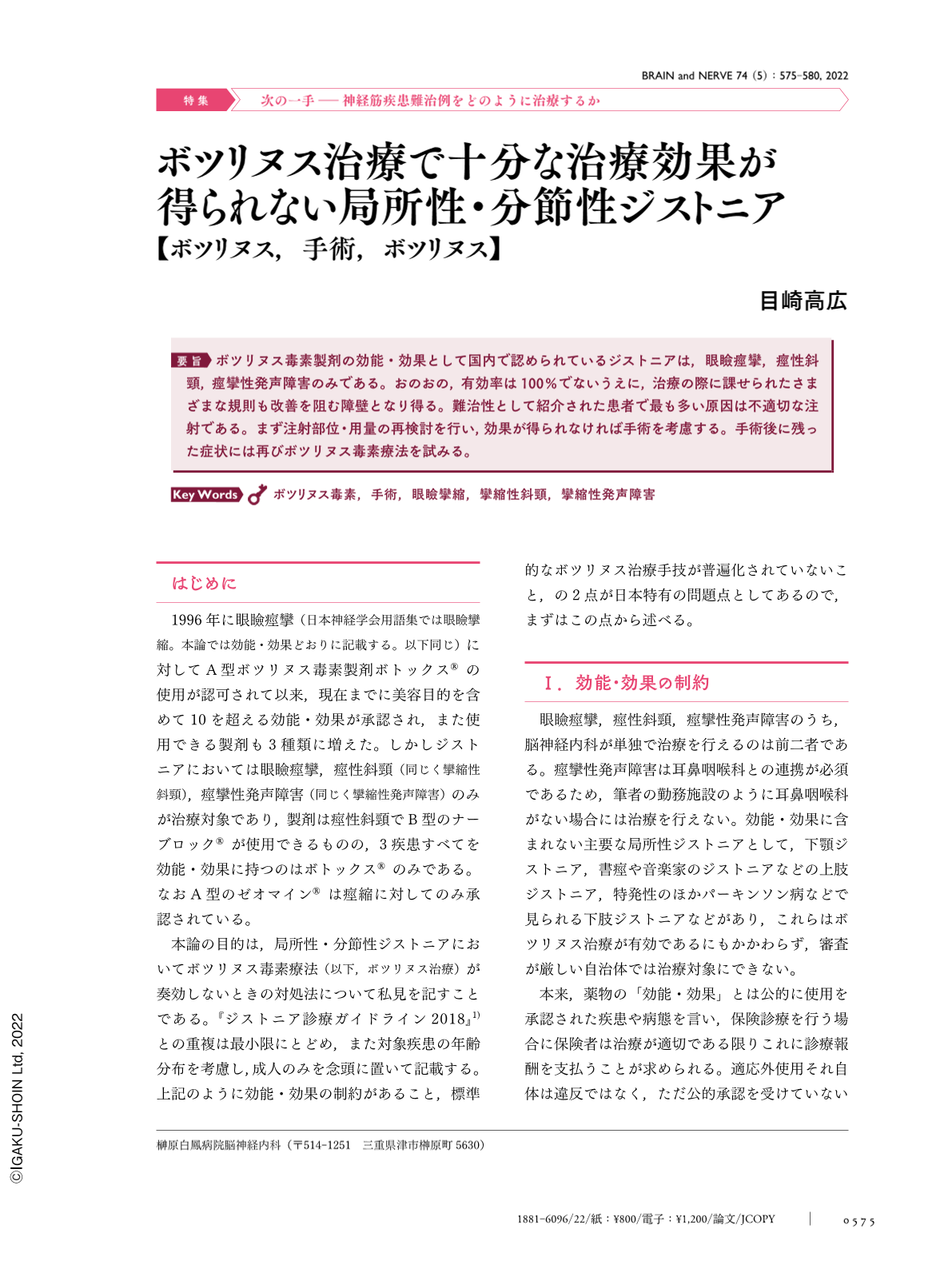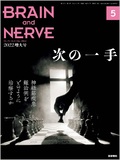Japanese
English
- 有料閲覧
- Abstract 文献概要
- 1ページ目 Look Inside
- 参考文献 Reference
ボツリヌス毒素製剤の効能・効果として国内で認められているジストニアは,眼瞼痙攣,痙性斜頸,痙攣性発声障害のみである。おのおの,有効率は100%でないうえに,治療の際に課せられたさまざまな規則も改善を阻む障壁となり得る。難治性として紹介された患者で最も多い原因は不適切な注射である。まず注射部位・用量の再検討を行い,効果が得られなければ手術を考慮する。手術後に残った症状には再びボツリヌス毒素療法を試みる。
Abstract
Botulinum toxin is effective in most patients with focal/segmental dystonia. A minority of these patients show primary or secondary resistance to this therapy. After excluding technical reasons, such as inappropriate dosage or injection sites, neutralizing antibodies against the toxin may be suspected. If the patient tests positive for the anti-toxin antibody, changing the toxin type may be effective. The next step in treatment is local surgical approaches or stereotactic surgery, depending on the type of dystonia. Stereotactic surgery can be the first-line treatment for some types of dystonia because of its high efficacy or because of the absence of official approval for botulinum toxin treatment in Japan. If the clinical efficacy of surgery is insufficient, retreatment with botulinum toxin should be considered for remaining symptoms when the patient is negative for the anti-toxin antibody. Adjunctive therapies include oral medication, rehabilitation, or the use of devices that alleviate symptoms via sensory tricks or other mechanisms. Any of these may be applied simultaneously with the main procedure. The shortage of expert doctors providing botulinum toxin therapy is the most urgent issue in Japan, as this limits patients' access to therapy and potentially undermines the quality of disease management.

Copyright © 2022, Igaku-Shoin Ltd. All rights reserved.


